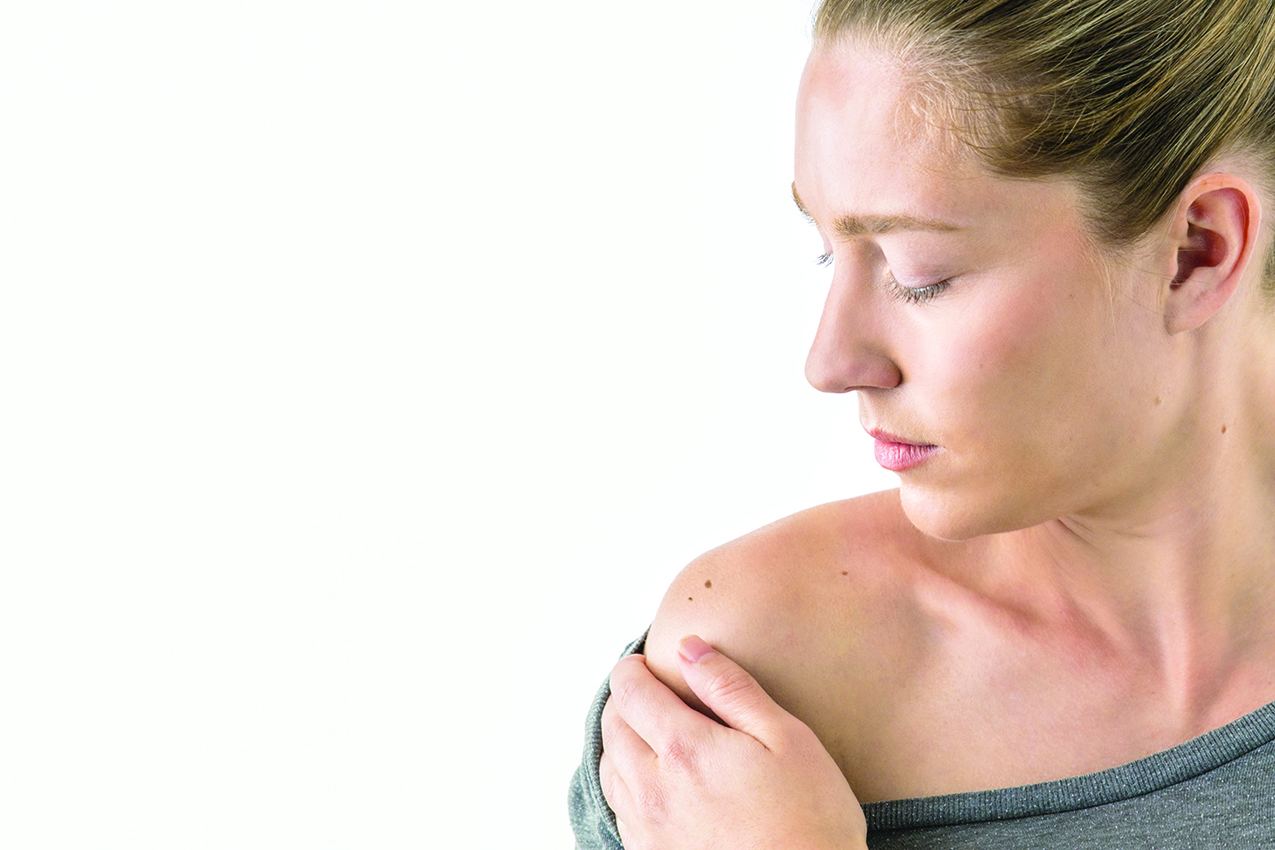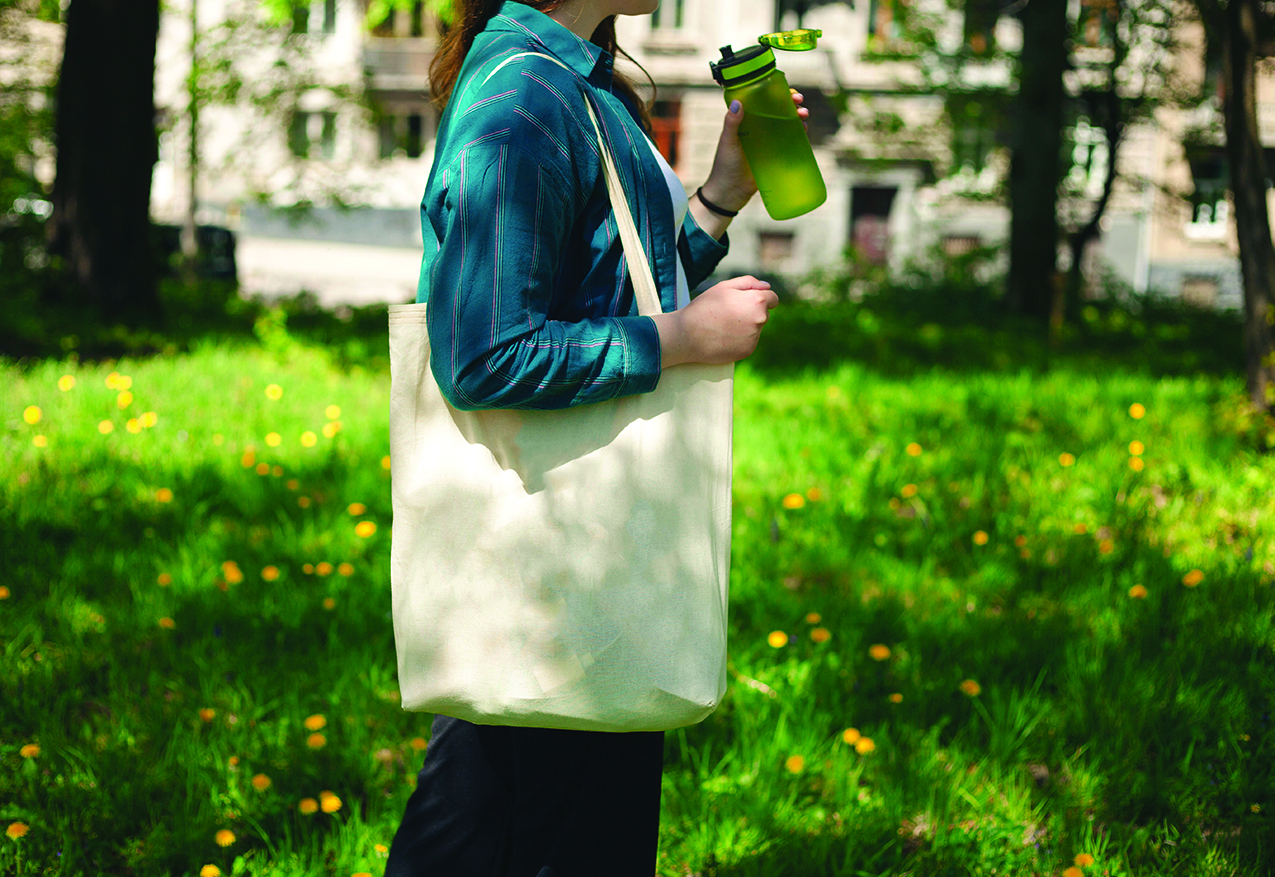HEALTHY LIVING
Healthy habits for your home

(Family Features) If you’re like most Americans, health is an important aspect of your resolutions when each new year rolls around. While factors like diet and exercise are keys to healthy living, so are the ways you care for your home and belongings.
Your home living environment plays a major role in your health and comfort, so incorporating some new habits like these from the cleaning experts at Swash Laundry Detergent can help you establish a healthier lifestyle.
Control Air Quality
Especially during the winter months when your home tends to be closed tight, air can grow stale. Do your best to keep air quality strong by opening windows on mild days to circulate fresh air, using an air purifier to remove irritants and pollutants, frequently vacuuming and sweeping to keep floor dust and debris under control and regularly cleaning textiles that can trap allergens and other particles.
Scale Back Detergent Use
Using too much laundry detergent isn’t just risking buildup and unnecessary wear on your washer and dryer; it can also increase the residue and buildup in your clothes, which can lead to skin irritation and damage fabric faster. Using only what you need helps protect your belongings and your skin. An option like Swash Laundry Detergent, which features a Precision Pour Cap, dispenses the detergent for you, so you only pour what you need to effectively clean each load and fight stains. A single bottle of the ultra-concentrated formula – available in Simply Sunrise, Free & Clear and Pure Linen scents – washes up to 83 loads while taking up less space than traditional, bulky detergent bottles.
Make Use of Natural Light
When winter brings day after day of dark, dreary weather, it can take a toll on your mood. Brightening your living space with natural light can positively influence your emotional state while helping with your electric bill. If you’re concerned about privacy, utilize window treatments at night, but let the sunlight bring good cheer to your living spaces during the day.
Switch Bedding on Schedule
While you sleep, your body sheds oils, cells and elements you carry into your home like pollen. Sheets should be washed once a week on the hottest water setting your fabric will tolerate (check tags for laundering directions on your sheets before washing). If your schedule makes weekly washing, drying and remaking the bed unrealistic, consider having a couple sets you can rotate so you always have fresh, clean sheets waiting to remake your bed on laundry day.
Work Up (and Wash Out) a Sweat
The materials that keep you feeling cool and fresh by wicking away sweat can quickly get stinky, but over-washing can make them lose their shape and fade. Even so, washing after every use is a must. Washing workout clothes inside out exposes the surfaces that have absorbed sweat and body oil to detergent and agitation. Be sure to close zippers, buttons, clasps and other fasteners to prevent snags. Pre-soaking with equal parts vinegar and cold water can also help eliminate odors, and washing in a gentle, cold-water cycle and drying on low heat can help protect the fabric’s elasticity and wicking properties.
Start your year off right with more advice for healthy habits around the home at Swash.com.
5 Ideas for an Organized, Intentional Laundry Space
Having an organized and decorated laundry room can ease the weight of your to-do list and the tension you feel from the day-to-day grind. It can also help keep your laundry routine simple, orderly and organized. Consider these tips from the laundry experts at Swash:
1. Think like a minimalist.
Empty your laundry space and sort through what you need and what you don’t. Eliminating the extras leaves room to evaluate your space. Consider whether you could organize differently to make frequently used items more accessible and make the most of your storage space. Cutting down on clutter may even make it possible to incorporate shelves or cabinets that add stylish functionality.
2. Update your space with open shelving.
Open laundry shelves offer a sense of more space, and the horizontal lines can lend a sense of calm. For an easy and attractive upgrade, try hanging 2-3 open shelves within easy reach. If you’re hesitant about the open feel, limit to just one shelf for the everyday necessities and keep the rest of your laundry supplies out of sight in a complementing cabinet. Baskets offer another option for concealing your belongings, whether you use them on the open shelves or inside cabinets to keep things tidy and clutter-free.
3. Create a practical workspace.
Mundane laundry chores like folding can be more enjoyable when you have a comfortable, dedicated space for the job. An open counter or table that folds down from the wall gives you the surface you need to fold clothing within your laundry space without disrupting the rest of the house. Other ways to add practical space include areas for sorting garments that need special attention and a place to hang items that shouldn’t be dried in the dryer.
4. Use colors and materials that evoke calm.
Natural materials and a neutral color palette can lend to a more peaceful space. Lighter neutral colors reduce stress and anxiety, promote relaxation and can even make a space feel more expansive. For a calm, refreshing area, start with a base of white then add natural textures like woven baskets, faux or real plants and marble stone accents in the tile flooring or backsplash. Add a calming color like blue to evoke the tranquility of the sky or ocean, or consider green to incorporate the soothing effects of nature.
5. Invest in products that bring you joy.
Choose quality pieces that aren’t overly trendy and will stand the test of time. Consider how your investment of laundry decor, including your washer and dryer, will serve you in the space in the coming years.
Photo courtesy of Getty Images (woman making bed)
SOURCE:
Swash
HEALTHY LIVING
How to conduct a skin care self-exam

Time spent soaking up the summer sun is one of the things that makes the season so appealing. Warm outdoor air has a calming effect that can make anyone feel more relaxed and comfortable.
As good as warm summer sun can feel, overexposure to the sun can be dangerous. The World Cancer Research Fund reports there were more than 330,000 new cases of skin cancer diagnosed across the globe in 2022. A significant percentage of skin cancer cases can be prevented, and prevention is a multifaceted process that includes skin care self-examinations. Self-exams do not take up much time, and individuals can speak with their physicians about how frequently they should check their skin for signs of skin cancer. The U.S. National Library of Medicine offers the following instructions for how to conduct a skin self-exam.
Choose the right time to examine your skin. The USNLM recommends conducting a skin exam after bathing. Women who routinely conduct breast self-exams can check their skin at this time as well.
Use a full-length mirror. ItÕs not always easy to examine skin throughout the body. But signs of skin problems can occur anywhere on the body, including areas that might be hard to see without help. If possible, conduct a self-exam of the skin in front of full-length mirror in a brightly lit room.
Identify what youÕre looking for. The USNLM notes you should be looking for any new skin markings. This includes bumps, moles, blemishes, and changes in skin color.
Pay close attention to preexisting moles. A potential sign of skin cancer includes moles that change over time. Examine preexisting moles to see if they have changed in size, texture, color, and shape.
Look for unusual moles. The USNLM characterizes certain moles as Òugly duckling moles.Ó These unique moles look and feel different from nearby moles and may be indicative of skin cancer. Speak with a dermatologist if a self-exam uncovers the presence of moles with uneven edges or differences in colors or asymmetric shapes. Moles that look different from one side to the other also should be brought to the attention of a dermatologist. Moles that do not stop bleeding or will not heal also merit examination by a skin care professional.
When the time comes to conduct the exam, the USNLM recommends following these steps:
- Look closely at your entire body, both front and back, in the mirror.
- Check under your arms and on both sides of each arm. Be sure to examine the backs of your upper arms, which can be hard to see.
- Bend your arms at the elbow, and examine both sides of your forearm.
- Examine the tops and palms of your hands.
- Examine the front and back of both legs.
- Examine your buttocks and between your buttocks.
- Examine your genital area.
- Examine your face, neck, the back of your neck, and scalp. Use both a hand mirror and full-length mirror, along with a comb, to see areas of your scalp.
- Examine your feet, including the soles and the spaces between your toes.
- Ask a person you trust to help examine hard-to-see areas.
Skin cancer poses a formidable threat, but many cases of the disease are preventable. Routine skin self-exams are a vital component of skin cancer prevention. TF256909
HEALTHY LIVING
What does 100% grass-fed organic dairy bring to your table

(Family Features) It’s no secret that many grocery store dairy sections are filled with more options today. One choice continuing to gain favor with consumers is 100% grass-fed organic dairy. Nutrition, environmental awareness and animal care are some of the leading reasons consumers choose grass-fed dairy products.
Globally, the 100% grass-fed dairy market is projected to continue growing and some market experts predict annual growth rates as high as 22%. If you’re curious about 100% grass-fed organic dairy, consider these benefits from Maple Hill, America’s original 100% grass-fed organic dairy producer. The pioneer of 100% grass-fed organic dairy took its commitment a step further by celebrating and declaring National 100% Grass-Fed Organic Dairy Day on April 15, which recognizes the positive impact it has on consumers, cows, farmers and the environment.
1. Honoring the Farmers
Unlike large-scale corporate dairy farms, most organic farms are small, family-owned operations dedicated to traditional, sustainable farming. Small dairy farms have been disappearing, but 100% grass-fed organic dairy creates a sustainable, viable path forward for farmers who work in harmony with nature.
This more natural approach to dairy is a “craft” process favoring small family farmers who are willing to dedicate the extra focus and patience to a better product and process. These family farms are passed on to future generations to grow the “better for you, better for the planet” approach.
2. Commitment to Good Health
Most consumers don’t know the difference between traditional organic and 100% grass-fed organic dairy. One key distinction is the products’ nutritional composition; 100% grass-fed organic dairy provides a 50% healthier ratio of omega 3:6 and 40% higher levels of CLA fatty acids, which may support heart health and provide other health benefits.
What’s more, Maple Hill’s products made with 100% grass-fed organic dairy are GMO free, hormone free and antibiotic free with no additives or fillers. The line of high-quality, rich-flavored products let you experience the organic difference from traditional dairy for a nutrient-dense solution that tastes as nature intended.
3. Happy, Healthy Cows
Cows on a 100% grass-fed diet can live up to three times as long as grain-fed cows and are never subjected to unnatural diets, hormones or antibiotics. More time in pastures filled with lush grass means cows have the freedom to roam, ruminate and graze on diverse, nutrient-rich grasses.
The result is happier, healthier cows, which in turn results in a richer, better-tasting and more nutrient-dense milk.
4. Sustainability and the Environment
Producing milk without grain or corn requires farmers to focus on regenerating soil and the soil life that supports everything else on the farm. In fact, the healthier the soil, the healthier the feed, so farmers have a natural incentive to be as regenerative as possible. Regenerative grazing practices are a powerful and positive tool to improve land and the web of life on farms by actively restoring soil health, promoting biodiversity and reducing the environmental impact compared to conventional dairy.
Well-managed grazing helps pull carbon from the atmosphere into the soil, fighting climate change in the process. In addition, healthier soil retains more water, reducing runoff and protecting water sources from agricultural pollution.
5. Strengthening the 100% Grass-Fed Organic Market
Consumers are increasingly aware of the choices they have in dairy products and how 100% grass-fed organic supports their health, farmers, animals and the planet. Some ways to support this category’s continued growth include choosing certified 100% grass-fed organic dairy, advocating for regenerative farming and helping shape a more sustainable food system.
Learn more about 100% grass-fed organic dairy products at maplehill.com.
SOURCE:
HEALTHY LIVING
Promote health with these daily habits

Health should be a priority, but too often life gets in the way and individuals take a reactive, rather than proactive, approach to their personal well-being. But living healthier need not be so difficult. In fact, research suggests that small, positive changes in how a person lives each day creates a healthier person over time.
A Hologic-Gallup survey on the state of women’s health conducted in April 2024 found 63 percent of respondents said it was hard for them to make health a priority. They cited feeling overwhelmed, needing to care for others before themselves, emotional/mental health, and work as the top barriers to focusing on health. But it’s important that both women and men recognize that small changes can add up to big results. These healthy habits can help individuals start living healthier lifestyles.
· Get some exercise. Regular physical activity is one of the most important things a person can do fo his or her health. Exercise helps manage weight, reduces the risk of disease, strengthens bones and muscles, and improves brain health. The Centers for Disease Control and Prevention says adults should aim for at least 150 minutes (30 minutes a day for five days) of moderate-intensity aerobic activity a week. A great place to begin is with a daily walk, which is a simple and effective habit that does not require a lot of time and no equipment except a good pair of athletic shoes.
· Wear sunscreen every day. After washing your face each morning, apply a facial moisturizer with an SPF of at least 30, or blend equal parts of sunscreen and regular moisturizer, suggests Harvard Health. Use it on the face, neck, ears, and any thinning hair spots on the scalp. Skin cancer is the most common type of the disease worldwide, and wearing sunscreen can help many people avoid it.
· Spend time outdoors. It takes just a few minutes in the sun to raise vitamin D levels. Vitamin D is necessary for bone and heart health and helps to boost mood, says WebMD. Various studies indicate spending time in green spaces promotes calm and increases happiness.
· Plan your meals. Meal planning is not just a way to manage food budgets. It’s also a great method to being more mindful of food choices and avoiding impulse buys or meals that may not be as healthy as they can be. Adding more plant-based foods to a diet is a good start. Such foods can reduce the risk of chronic conditions like high cholesterol and hypertension.
· Stay hydrated. Hydration supports good digestion, increases energy and may improve brain performance, states Harvard Health. Drink a glass of water each day upon waking up and with every meal. Older adults often do not feel thirst like they did when they were younger, so it is especially important for seniors to stay hydrated.
Healthy habits are more easily adopted when people begin small and make a daily commitment to their overall health.
-

 NEWS3 years ago
NEWS3 years ago2 hurt, 1 jailed after shooting incident north of Nocona
-

 NEWS2 years ago
NEWS2 years agoSuspect indicted, jailed in Tia Hutson murder
-

 NEWS2 years ago
NEWS2 years agoSO investigating possible murder/suicide
-

 NEWS2 years ago
NEWS2 years agoWreck takes the life of BHS teen, 16
-

 NEWS2 years ago
NEWS2 years agoMurder unsolved – 1 year later Tia Hutson’s family angry, frustrated with no arrest
-

 NEWS2 years ago
NEWS2 years agoSheriff’s office called out to infant’s death
-

 NEWS2 years ago
NEWS2 years agoBowie Police face three-hour standoff after possible domestic fight
-

 NEWS2 years ago
NEWS2 years agoDriver stopped by a man running into the street, robbed at knifepoint






